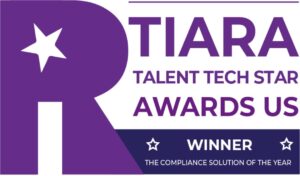The need to comply with thousands of ever-evolving federal, state, and local employment and labor laws brings several challenges to the company’s threshold. As a result, employers end up spending excessive time and money to track the current compliance requirements and (sometimes) get exposed to high levels of risk and liability – ultimately leading to exorbitant legal costs, organized labor, and legal settlements.
But what if you could get access to technology that tracks and manages important HR decisions for employment laws. VirgilHR deploys its proprietary database of employment and labor law requirements to help HR managers maintain legal compliance with employment laws related to onboarding, off-boarding, and leave requests, to name a few. It blends seamlessly into the company’s HR tech and offers real-time guidance across local, state, and federal employment and labor laws.
1. Employment Laws are Always in A Constant Flux
The single most complicated roadblock that employers face with employment laws is the ever-changing nature of existing legislation. Having to keep track and craft strategies in line with these updates can be overwhelming for most HR managers. The inability to keep up with these updates, on the other hand, can result in serious penalties, fines, and lawsuits for employers. This is where VirgilHR’s comprehensive database can save the day. It enables the HR department to stay up-to-date with the most current laws so they can carve the right compliance strategies without having to pour in a majority of their time researching.
2. New Employment and Labor Laws Demand New Compliance Procedures
The role of Human Resources in the workplace goes far beyond just managing recruitment, onboarding, L&D, and employee payroll. HR professionals are tasked with acquiring a consistent and comprehensive knowledge of all updated and relevant HR laws that govern employment within their companies.
These laws facilitate HR managers with ensuring workplace safety, regulating hiring and firing, confidentially, and benefits and pay. They also offer guidance when workplace conflict and complaints decide to knock at the company’s door.
Creating and implementing valuable policies and procedures that ensure employee protection requires a deep understanding of Employment and Labor Laws. When it comes to handling new employment and labor laws, employers must:
- Realize and meet the legal obligations that outline the Employment and Labor Laws.
- Proactively analyze and craft or update policies to ensure complete compliance at the workplace.
- Ensure the staff is supplied with any new or updated HR policies and procedures.
3. Labor Laws Vary in Different States
There are approximately 180 employee protection laws that the Department of Labor currently enforces. For example, in 2021, several states saw a rise in minimum wage increases. States like Virginia and Colorado incorporated several changes in laws that cover paid sick leave, wage and hour issues and pay equity. With remote work now becoming a trend across the globe, managing varying laws across several states (and countries) has become an even bigger challenge.
4. Managing the Ever-Changing Leave Laws, Wage and Fair Labor Laws Is a Challenge
Regulated by the US Department of Labor, the Fair Labor Standards Act (FLSA) protects employees’ wages and hours. A few of the many important functions of FLSA include:
- Setting the national minimum wage
- Setting the overtime pay requirements
- Setting a 40-hour work week
Family and Medical Leave Act (FMLA) is another important statute within this category. This statute protects the employees’ right to 12 weeks of unpaid leave for medical and family reasons.
When benefits, leave, wage and labor laws see changes, it can trigger several challenges for HR professionals. Especially with remote and hybrid work setting, managing these laws have become an overwhelming task. This is where investing in the right HR technology helps. Virgil’s proprietary database helps effectively manage compliance with employment decisions like onboarding, off-boarding, and leave requests. As a result, your HR department can now walk on a guided path across federal, state, and local employment and labor laws.
5. Tax Laws Demand Constant Compliance
Tax laws are another critical element of human resource compliance. When it comes to tax laws, there are several aspects to take into consideration. These include employee benefits, tax deductions, and payroll compliance at both state and federal levels. A great way to smoothen out the creases associated with tax demands would be to run regular HR compliance audits to ensure the HR team complies with the company’s fiscal obligations.
6. Common Lawsuits That Linger in HR
Should an event of non-compliance occur in the company, an employee has the right to sue for several reasons. This is another reason HR departs must possess a thorough knowledge of all laws and regulations. Aside from being aware of these laws, they must also know how they can handle any legal compliance issues that may spring up. The following are some of the most common lawsuits employees file:
- The inability to meet contractual obligations
- When the employee is paid less than what is mentioned in their contracted salary or bonuses
- Termination without a plausible cause
- Lack of action for situations arising from gender, racial, and sexual discrimination
- Sexual and other forms of harassment
- Injury due to damaged equipment in the workplace
- Non-compliance with leave laws
- Non-compliance with FLSA standards and unpaid overtime
How VirgilHR Straightens Out Employment and Labor Law-Related Challenges
Simply put, employment and labor law will never stop evolving. Companies that can grasp this truth and put their best foot forward to remain compliant are likely to win in the long run. The ones who fail to adapt and update, struggle with a long queue of compliance issues.
When neglected or implemented in a flawed manner, these ever-changing laws cost most companies their money and resources. The HR team is hit the hardest when any cases of non-compliance arise. For example, regardless of the efforts your HR team makes, incorrect employment law tracking can cause more risk and liability. This, in turn, triggers a massive ripple of expensive settlements and legal costs. Social Media also plays a massive role in exacerbating a company’s reputation should an employee decide to take their grievances online.
While the road to employment law compliance is a bumpy one, several tools can make the journey easy for you. With us, managing Employment and Labor Law has never been easier. Looking for a more comprehensive answer to “How to solve employment and labor law pain points?” Let’s talk about how VirgilHR can help! Reach out to us now!






